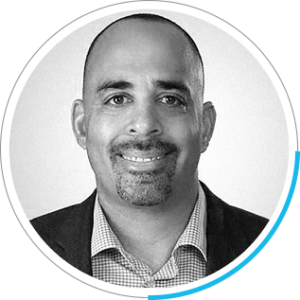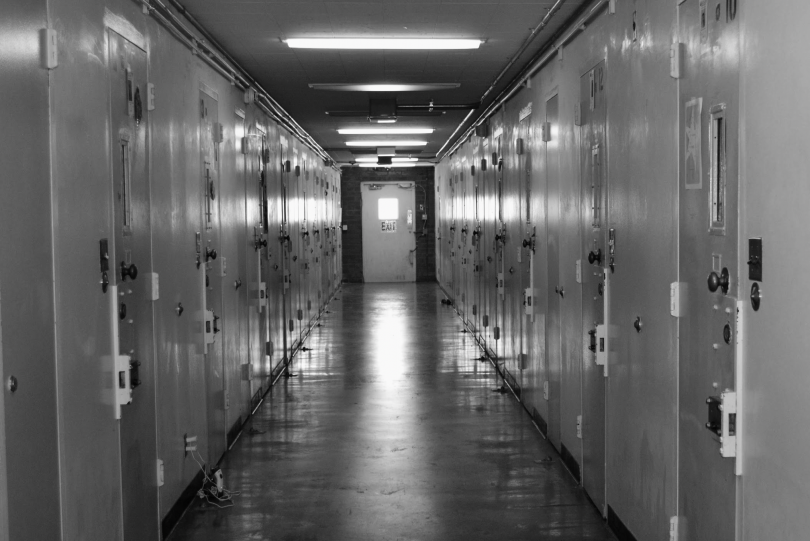by David Muhammad
California Gov. Gavin Newsom announced the closure of the state’s youth justice system, the Division of Juvenile Justice(DJJ), with the release of his revised state budget on Thursday. Shortly after taking office last year, he promised to “end the juvenile justice system as we know it.” His administration planned to remove DJJ from the management of the state’s prison system and place it in the health department.

David Muhammad, Executive Director, National Institute for Criminal Justice Reform (NICJR), via NICJR
But now with the COVID-19 pandemic wreaking havoc on the state budget, the crisis has turned into an opportunity. Newsom now plans to shutter the state system altogether, leaving it to the individual counties to house youth adjudicated for the most serious offenses.
No question this is a victory for youth justice advocates. It is just a very complicated victory fraught with potential pitfalls and unintended consequences.
DJJ, formerly known as the California Youth Authority (CYA), has a long history of scandal, horrible conditions, terrible outcomes, and excessive spending. In the 1990s there were 10,000 youth incarcerated in the juvenile prisons with another nearly 10,000 youth in CYA’s parole system. Today the parole system no longer exists, having already been transferred to the counties, and there are less than 700 youth in the three remaining DJJ facilities. The state spends more than $300,000 every year for each youth.
From 1999-2004, I made the nearly two-hour drive from Oakland, Calif., to the then-four CYA facilities in Stockton, Calif., once or twice a week to facilitate cognitive behavioral therapy sessions with the youth and young adults. During that time, violence in CYA facilities was at its peak, five youth died in a single year, the recidivism rate was above 90%, and conditions in the facilities were harsh. An exposé series by the San Jose Mercury News, along with fierce advocacy, led to several counties placing a moratorium on sending youth to the state system.
Eventually, a lawsuit resulted in a consent decree requiring a long list of court-ordered reforms. The California legislature also limited the youth who could be sent to the system to only those charged with serious and violent offenses. Despite the extraordinary downsizing and numerous reforms, DJJ remains a troubled system. If done right, its closure will be a victory for youth, their families, and the community.
But simply handing the youth over to the county probation departments is not reason enough alone to celebrate. There are significant challenges ahead. Though youth enter DJJ for offenses committed prior to turning 18, they can remain in the juvenile facilities until their 25th birthday. The average length of stay in DJJ is two years. Although county facilities have far more capacity than needed to absorb the 600 to 700 youth in DJJ custody now, county juvenile halls currently hold youth up to 18 years old and are designed for short stays, between 20 to 35 days.
When I was the chief probation officer of Alameda County, I agreed with Gov. Jerry Brown when he called for DJJ’s closure in 2011. Back then, there were 35 youth from my county in the state system who I planned to house at a refurbished county camp. But today I agree with advocates that we should not waste precious resources, spending many millions on constructing new buildings to incarcerate youth.
Yet that does pose a dilemma. We have empty beds in county facilities, but they are designed for short-term stays and do not have the appropriate space for recreation, rehabilitation, treatment, and vocational programming. The schools are run by the county offices of education, with varying quality across the state, but none equipped to teach 20-year-olds.
Then you take a place like Los Angeles County, the size of many countries, and in one sense it looks ideal to take its youth back from the state. It is the county with the most youth in DJJ, a county with several closed facilities that actually have programming space, and a county probation department with 6,000 employees and a $900 million budget. But it’s a county with such a long-troubled juvenile justice system that many in the field fear it would be worse than DJJ.
Counties need to develop high-quality transformative residential programs. Secure programs that hold youth for more than six months should be reserved for youth who have been adjudicated for serious offenses and who have been assessed as high risk. Without such an option, these are youth who would likely be charged as adults.
These programs must have a residential and therapeutic environment and not resemble a jail, as the juvenile halls in California do today. These programs must have quality education, including higher education, rehabilitation programming, treatment and therapy options, and vocational training. This will require appropriate resources not currently included in the governor’s budget.
While we celebrate a victory in youth justice reform amidst a global pandemic, we must also recognize the long road ahead to make this successful.
David Muhammad is the executive director of the National Institute for Criminal Justice Reform and the former chief probation officer of Alameda County, Calif.
This essay first ran with our friends at the Juvenile Justice Information Exchange, whose excellent work you should put on your list to track.
Photo of DJJ facility interior courtesy of the Center on Juvenile and Criminal Justice


Unfortunately, Newsom is closing juvenile facilities and they will be releasing violent offenders to their cities without a plan. They Have No Plan about what to do with these Violent Offenders! Does anybody get that? They will release them to offend again. Perhaps Newsom could use the money he’s planning on giving illegal immigrants. Oh by the way, an illegal immigrant just ambushed my son with two other guys and shot my 18 year old son in the back and left him for dead. Do you think we should give them money , or put them in jail? Newsom doesn’t care, he’s protected with his security team! Are your kids protected by a security team David, if not, maybe you should rethink your position.